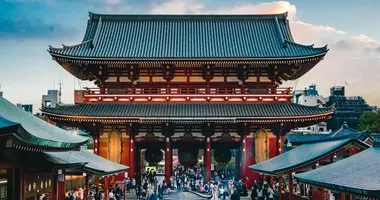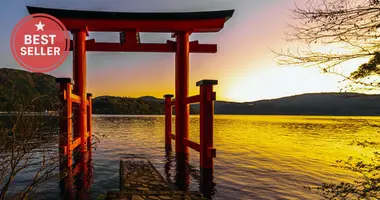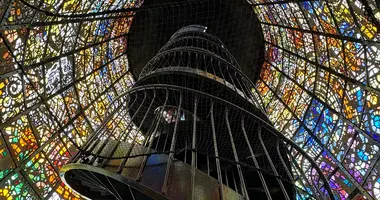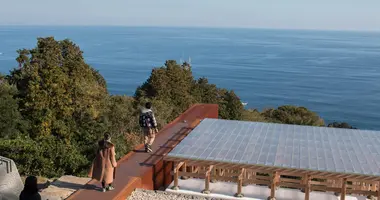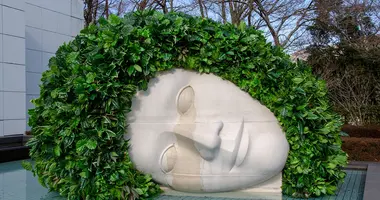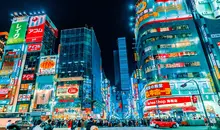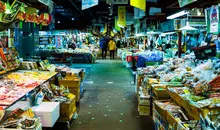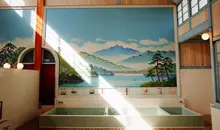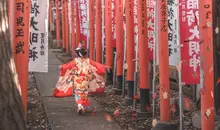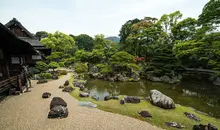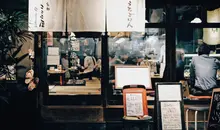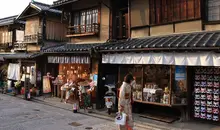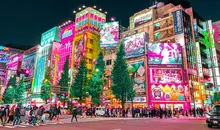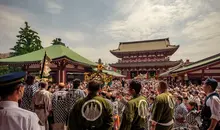Hakone Glass Forest: A Venetian glass paradise in Japan
- Published on : 27/04/2025
- by : Japan Experience
- Youtube
Nestled in the lush greenery of Hakone's Sengokuhara area, the Hakone Glass Forest stands as Japan's first museum dedicated entirely to Venetian glass. This unique cultural gem combines the elegance of Italian craftsmanship with the serene beauty of the Japanese landscape. As you enter the grounds, you'll be greeted by glittering glass trees and sculptures that transform the natural setting into a magical wonderland. The museum not only houses rare glass artifacts dating from the 15th to 18th centuries but also offers interactive experiences and garden spaces that showcase the versatility of glass as an art form. Whether you're an art enthusiast or simply looking for a distinctive experience in Hakone, this glass paradise promises to captivate your imagination.
Discovering the Hakone Venetian Glass Museum
The Hakone Venetian Glass Museum, also known as Hakone Glass Forest (箱根ガラスの森美術館), opened as Japan's first art museum specializing in Venetian glass. Located in the scenic mountains of Hakone, this distinctive cultural institution offers visitors a chance to experience the splendor of Venetian glassmaking traditions in a uniquely Japanese setting. The museum complex is thoughtfully designed to blur the boundaries between indoor exhibitions and outdoor landscapes, creating an immersive experience that engages all the senses.
What makes this museum particularly special is how it transports visitors into a Venetian state of mind while remaining firmly rooted in the natural beauty of Hakone. Upon arrival, guests are welcomed by the sight of an elegant Italian-style building that houses the main exhibition halls. Inside, you'll find yourself warmed by the sight of a Venetian fireplace with two lions and the insignia of Venice on the mantle, immediately establishing the Mediterranean atmosphere that permeates the entire experience.
The museum's collection spans approximately 1,000 pieces with around 100 exhibits carefully selected and displayed according to rotating exhibition themes. This curated approach ensures that return visitors will discover something new with each visit, while first-time guests receive a comprehensive introduction to the art of Venetian glass. The collection encompasses works from the golden age of Venetian glass during the 15th to 16th centuries, ancient glass from prehistoric times, decorative pieces revived by 19th-century Salviati workshops, and contemporary glass art from the 20th century.
Unlike traditional museums where you simply observe artifacts behind glass, the Hakone Venetian Glass Museum creates an experience that begins before you even enter the building and continues throughout your visit. This approach to exhibition design highlights the creativity and innovation that makes Japan Museums distinctive, offering visitors a feast for the senses rather than merely an educational outing.
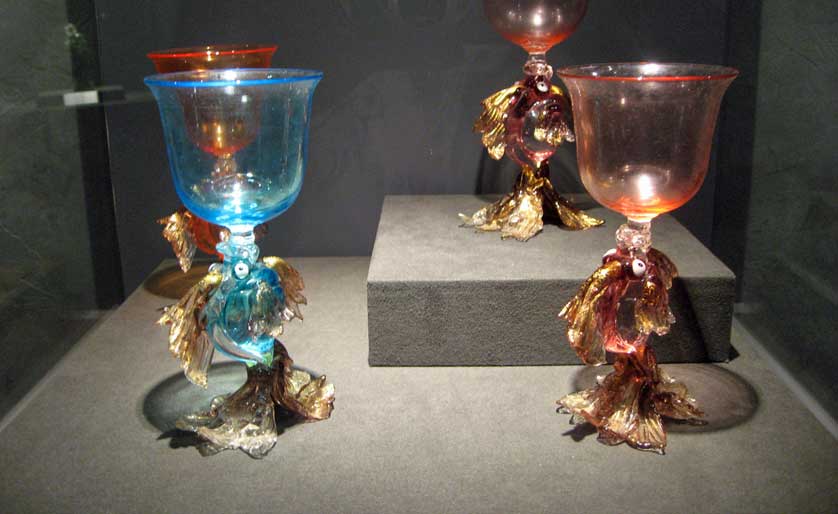
Exploring the museum's impressive glass collection
The heart of the Hakone Glass Forest lies in its extraordinary collection of Venetian glass masterpieces that showcase the evolution of this delicate art form across centuries. The museum's collection centers on pieces from the golden age of Venetian glass (15th-16th centuries) but extends to include ancient glass from over 2,000 years ago, ornamental pieces from the 19th century, and contemporary glass art. This comprehensive approach allows visitors to witness firsthand how glassmaking techniques and artistic styles have transformed over time.
One of the most captivating sections features traditional Venetian glassmaking techniques such as "millefiori" (meaning "a thousand flowers" in Italian), which creates intricate mosaic-like patterns resembling blooms captured within the glass. This complex process, dating back to ancient times and perfected by Venetian artisans, produces some of the most exquisite mosaic glass designs in the world. Equally impressive is the "filigrana" or lace glass collection, showcasing delicate white patterns within clear glass that demonstrate the incredible precision and skill of master glassblowers.
The museum also proudly displays works by internationally renowned glass artists, including American artist Dale Chihuly, whose vibrant, organic forms have revolutionized contemporary glass art. Having studied in Murano, Venice, Chihuly brought Venetian techniques back to America and transformed them into his distinctive style. His pieces, recognizable for their bold colors and sweeping forms, provide an interesting counterpoint to the traditional Venetian works in the collection.
For those interested in the historical context of Venetian glass, the museum offers fascinating insights into how this art form became synonymous with luxury and refinement. Visitors learn about the 13th-century decree that forced all Venetian glassmakers to relocate to Murano Island (with escaped artisans facing potential execution), which concentrated expertise and preserved trade secrets. This historical backdrop enriches the viewing experience, connecting each delicate piece to the broader narrative of Venetian cultural and economic history.
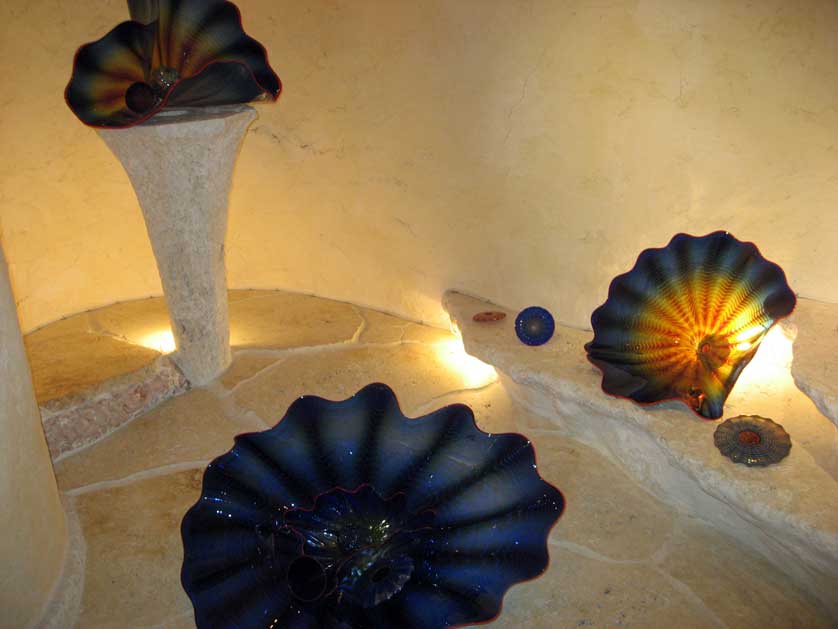
Wandering through the Venice-inspired gardens
Stepping outside the main museum buildings, visitors enter a magical landscape where Venetian aesthetics blend harmoniously with Japanese garden design. The gardens at Hakone Glass Forest represent one of the most distinctive features of this attraction, creating an outdoor gallery where glass art and nature coexist in perfect harmony. Overlooking the Owakudani Valley, these gardens offer breathtaking views that change with each season, providing a stunning backdrop for the glass installations.
The centerpiece of the garden experience is the collection of Glass Trees - sculptural creations with glass "leaves" that catch and reflect light in mesmerizing ways. On rainy days, these glass elements create an enchanting effect as water droplets cling to them, while sunny days transform them into prismatic displays of color. Many first-time visitors do a double-take, initially mistaking these glass elements for natural phenomena like raindrops or cherry blossoms before realizing they're witnessing artful illusions.
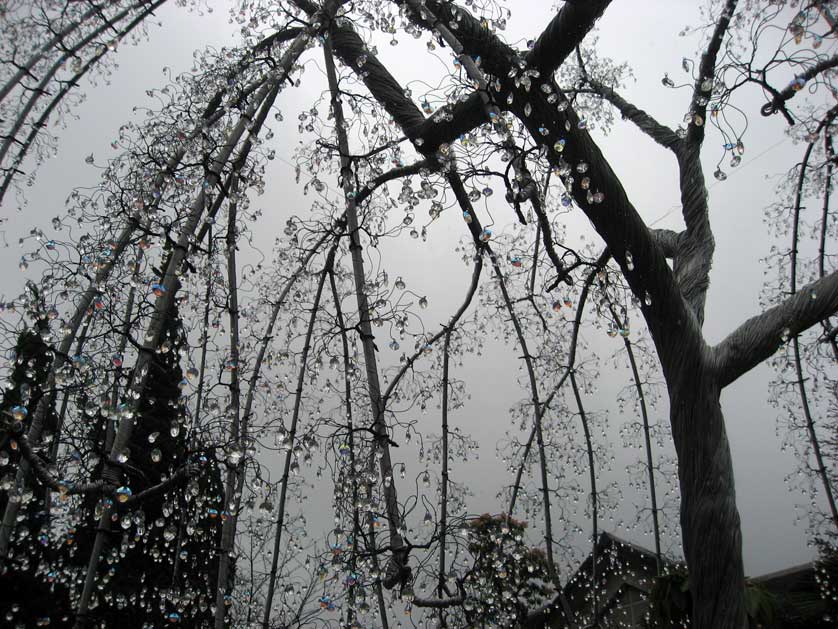
Another highlight is the Crystal Corridor of Light, an arch of crystal hanging over the bridge leading from the garden to the entrance of the Venetian Glass Museum. This striking installation features approximately 160,000 crystal grains that shimmer in the wind, creating a magical pathway that visitors can walk through. Similarly impressive is the Venetian Glass Rose Garden, where 1,000 softly curved glass roses crafted by Venetian artisans stand alongside 200 luminous crystal glass roses, forming one of the most popular photo spots in the entire complex.
The gardens also feature seasonal displays that showcase the harmonious relationship between glass art and nature's own beauty. In early summer, the Ortensia Garden presents crystal glass hydrangeas (called "Ortensia" in Italian) alongside real hydrangeas in the mountainous area filled with greenery and the pleasant ripples of the Hayakawa River. In autumn, visitors can enjoy crystal glass interpretations of Hakone Sengokuhara's famous pampas grass, swaying and twinkling in the autumn breeze among the real autumn foliage.
This thoughtful integration of glass art with natural landscapes demonstrates how the Hakone Glass Forest blurs the boundaries between exhibition space and natural environment, allowing visitors to experience the beauty of glass in various contexts and lighting conditions. The gardens invite slow, contemplative exploration, with numerous terraces where you can pause to absorb the scenery while listening to the rustling trees and birdsong that complement the visual splendor.
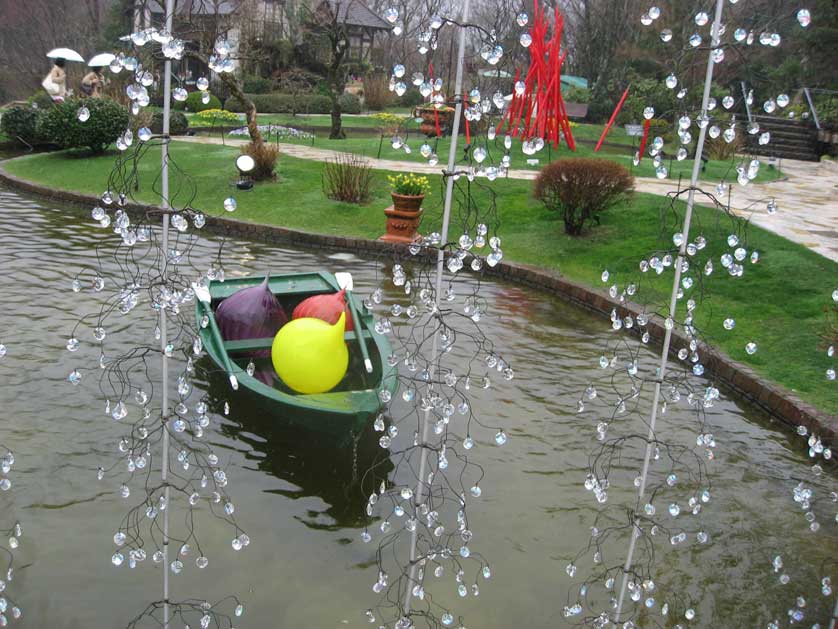
Shopping for unique glass treasures
The Hakone Glass Forest isn't just a place to admire glass art—it's also home to Japan's largest specialty glass store, offering visitors the opportunity to bring home their own piece of Venetian craftsmanship. The museum shop encircles a central courtyard and houses an impressive collection of approximately 100,000 glass pieces from around the world, with a particular focus on authentic Venetian creations.
The shop's collection includes various categories of glass items to suit different tastes and budgets. Particularly noteworthy are the millefiori pieces with their distinctive "thousand flowers" pattern, representing one of the most traditional and recognizable Venetian techniques. The intricate "lace glasses" (filigrana) display the delicate elegance that made Venetian glass famous throughout Europe, combining white and colored glass with clear glass to express the graceful beauty of lace.
For those interested in wearable art, the shop offers a diverse range of unique Venetian glass accessories crafted by skilled designers. These include jewelry pieces that showcase the versatility of glass as a medium for personal adornment. The tableware section presents functional art with glasses featuring charming shapes and vibrant colors that can add a touch of glamour to everyday dining experiences.
One of the most charming aspects of the shop is its commitment to authenticity and quality. The museum's buyers personally visit workshops in Murano to meet with the creators, understand their passion and inherited traditions, and ensure the quality of each piece in their collection. This direct relationship with artisans allows the shop to offer truly authentic Venetian glass rather than mass-produced imitations.
For visitors from abroad, the shop is designated as a tax-free establishment, offering exemption from consumption tax on purchases over 5,000 yen (before tax) for non-resident visitors with non-Japanese nationality who have been in Japan less than six months. This makes the shop an attractive destination for international tourists looking for distinctive souvenirs or meaningful gifts. Among the more unique offerings are "Millefiori Candy" – a clever collaboration between the museum and PAPABUBBLE that creates edible art resembling traditional millefiori glass patterns.
Experiencing hands-on glass workshops
For visitors eager to understand glassmaking beyond mere observation, the Hakone Glass Forest offers engaging workshop experiences where you can try your hand at creating your own glass art. These hands-on activities provide insight into the skill and patience required to work with glass while allowing participants to create personalized souvenirs of their visit. The Glass-making Experience workshops are suitable for both adults and children, making them an excellent activity for families exploring Hakone together.
The museum offers two main types of workshop experiences. The first is the Glass Fusing Workshop, which allows participants to create original accessories using a technique called fusing. This process involves melting and combining various types of glass to create unique patterns and effects. With over ten types of accessory fittings available, each participant can design a completely one-of-a-kind piece. The experience takes approximately 15-20 minutes, after which the creation needs to be heated and cooled properly. Finished pieces can either be shipped domestically or picked up at the ticket counter the next day.
The second option is the Sandblasting Workshop, where participants learn to carve patterns into glass surfaces. In this 40-60 minute experience, you'll place a patterned sticker on your chosen glass and then use a special machine to blast it with sand, effectively etching the design onto the glass surface. With various patterns and glass types to choose from, this workshop offers another avenue for personal expression through glass art. The resulting custom glassware makes for both a practical and meaningful souvenir of your visit.
These workshops do more than just provide entertainment—they offer genuine insight into the artistic processes behind the stunning works displayed throughout the museum. By experiencing firsthand the techniques used by glass artisans, visitors gain a deeper appreciation for the skill, precision, and creativity involved in glassmaking. The sense of accomplishment that comes from creating your own piece of glass art adds an interactive dimension to what might otherwise be a purely observational museum experience.
Small children may require assistance from accompanying adults during these workshops, but the museum staff are experienced in guiding first-time participants through each step of the process. The workshops represent the museum's commitment to education and engagement, ensuring that visitors of all ages can connect personally with the art form being celebrated throughout the facility.
Dining at the museum's café-restaurant
The Caffe Terrazza at Hakone Glass Forest offers more than just refreshment—it extends the Venetian experience through its elegant ambiance and Italian-inspired cuisine. Set within a building reminiscent of an aristocratic mansion, this open terrace-style café-restaurant provides a perfect setting to relax after exploring the museum and gardens. Large windows fill the space with natural light, while the terrace offers sweeping views of the green gardens and the majestic natural landscape of Hakone.
Adding to the authentic atmosphere, the café features daily live musical performances by both local and foreign artists. A singer from Naples often serenades diners, moving from room to room while performing traditional Italian songs. These performances are scheduled at 11 AM, 12 PM, 1 PM, 2 PM, 3 PM, and 4 PM daily, with each performance lasting about 15 minutes. This musical element enhances the sensory experience of dining at the café, creating a multi-dimensional impression of Italian culture.
The menu at Caffe Terrazza thoughtfully combines Italian culinary traditions with seasonal Japanese ingredients. During cherry blossom season, for example, visitors might enjoy a salad with real cherry blossom petals and dressing, paired with pasta featuring local spring vegetables. The restaurant offers a variety of options from Ukai's carefully selected Kuroge Wagyu beef steak to seasonal pasta dishes and delightful desserts that can be enjoyed alongside a selection of beverages.
It's worth noting that during lunch hours (11 AM to 3 PM), guests are required to order either a lunch set or a dessert rather than just drinks. The café does not accept individual reservations, but during busy periods, they implement a waiting system where visitors receive a ticket number and are called when a table becomes available. For those with dietary restrictions, the staff will make accommodations for food allergies whenever possible.
The dining experience at Caffe Terrazza completes the sensory journey that defines a visit to the Hakone Glass Forest. From the visual feast of the glass exhibitions to the tactile engagement of the workshops, the addition of Italian flavors and melodies creates a comprehensive cultural experience that engages all the senses. Many visitors find that pausing to enjoy a meal or dessert at the café provides a perfect opportunity to reflect on the artistic wonders they've encountered throughout the museum.
Practical information: Location, transportation and admission
Located at 940-48 Sengokuhara, Hakone-machi, Ashigarashimo-gun, Kanagawa Prefecture, the Hakone Glass Forest is accessible via several transportation options. The museum's setting in the Hakone region places it within a popular day-trip distance from Tokyo, making it a feasible addition to many travelers' itineraries. When planning your visit, it's essential to understand the various Access options and opening hours to make the most of your experience.
For travelers coming from Tokyo, the most straightforward route is to take a train to Odawara Station or Hakone-Yumoto Station, followed by a bus ride. From Shinjuku Station in Tokyo, there are direct buses to the museum, offering a convenient single-journey option. Alternatively, from Hakone-Yumoto Station, take the Hakone Tozan Bus (Route T) bound for Togendai and get off at "Hyoseki, Hakone-garasunomori-mae" (approximately 25 minutes). From Odawara Station, the same bus route takes about 22 minutes. If you're already in the Gora area of Hakone, take the Hakone Tozan Bus (Routes S, M) from Gora Station and exit at "Hakone-garasunomori" after about 15 minutes.
For those traveling by car, the museum is accessible via the Tomei Expressway. Take the Gotenba Exit and then follow National Route 138 to Sengokuhara (approximately 20 minutes). The museum is located along this route and offers a paid parking lot (150 spaces) for 500 yen per day, as well as a free parking area about 5 minutes' walk away.
The museum is open daily from 10:00 AM to 5:30 PM (with last entry at 5:00 PM) throughout most of the year. However, it closes for 11 days during winter, starting from the day after Coming of Age Day (usually in mid-January). On December 30th and 31st, the museum operates on reduced hours from 10:00 AM to 4:30 PM. It's worth checking the official website at www.hakone-garasunomori.jp before planning your visit, as the museum may occasionally close due to exhibition changes, bad weather, or traffic conditions.
Admission fees vary by age group, with standard tickets priced at 1,800 yen for adults, 1,300 yen for university and high school students, and 600 yen for elementary and junior high school students. Seniors over 65 receive a slight discount at 1,700 yen. Group rates are available for parties of 15 or more, and visitors with disabilities (along with one companion or carer) can enter for 900 yen (adults) or 400 yen (students) with appropriate documentation. Online tickets purchased through the official website are offered at reduced prices compared to same-day purchases at the entrance.
The Hakone Free Pass and FUJI HAKONE PASS provide discounted entry to the museum, making them good options for travelers planning to visit multiple attractions in the area. For international visitors, the museum offers information in English, though some exhibition catalogues and detailed descriptions may only be available in Japanese. Photography is permitted for personal use throughout most of the museum, though some restrictions apply to special exhibitions and equipment like tripods and flash lighting. For enthusiasts of Japanese culture and art, the museum certainly merits inclusion in any Hakone itinerary, alongside other notable attractions like the nearby Hakone Open-Air Museum. For more information about planning your trip to Tokyo and its surrounding areas, consider consulting Books on Tokyo Japan for additional insights.

